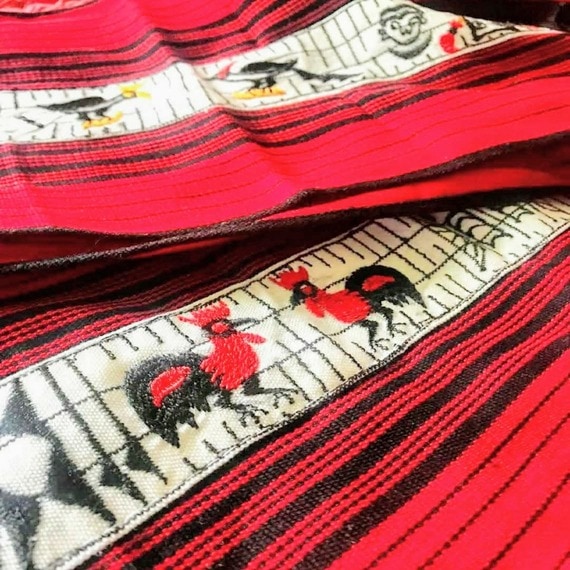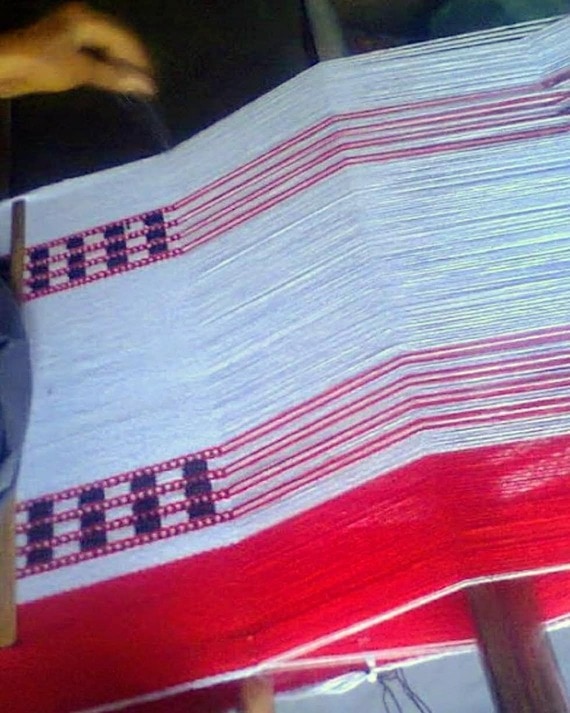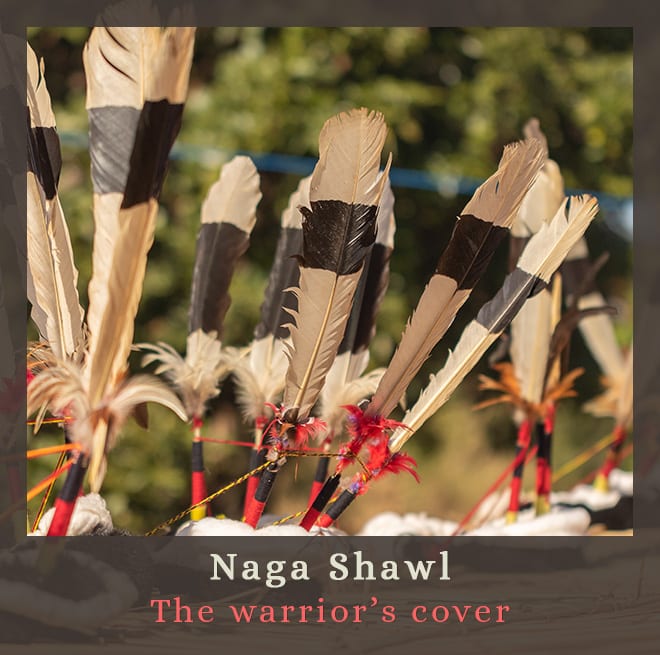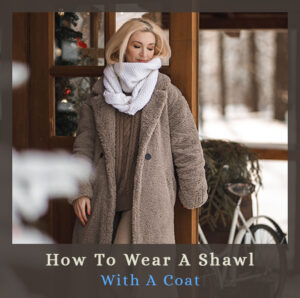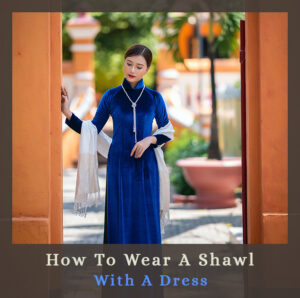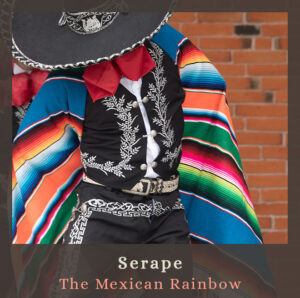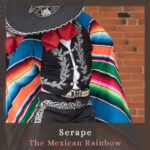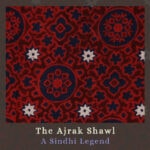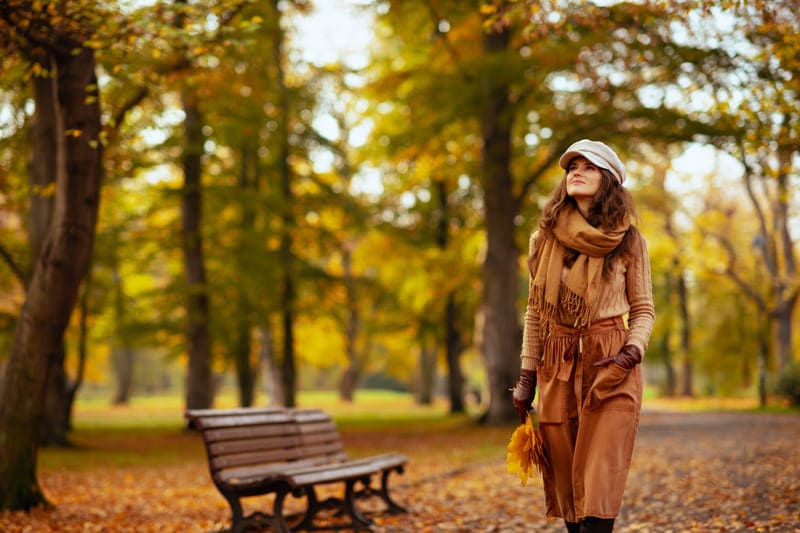Naga Shawl is a traditional shawl from the northeastern state of India called Nagaland. Their distinctive red, black, and white colors and symbolic icons make them highly unique and recognizable. These shawls hold deep meaning and are a proud accessory of identity among all Nagaland tribes. They are traditionally made of cotton or wool.
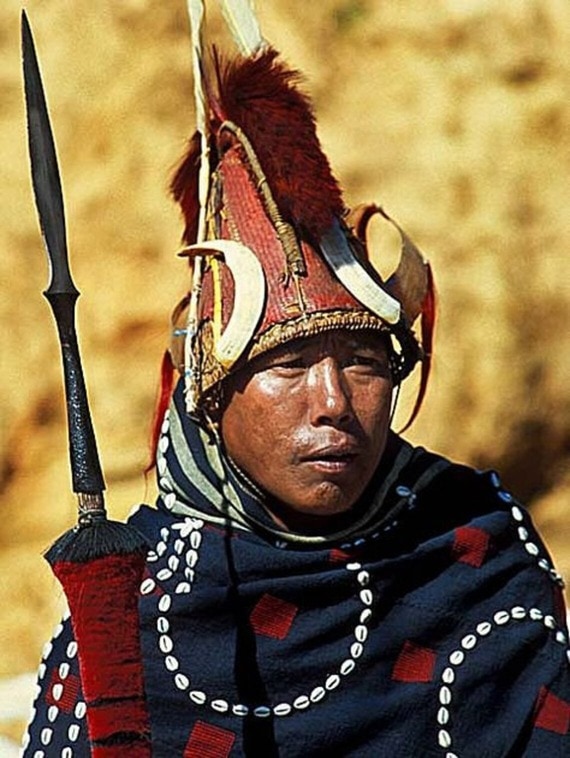
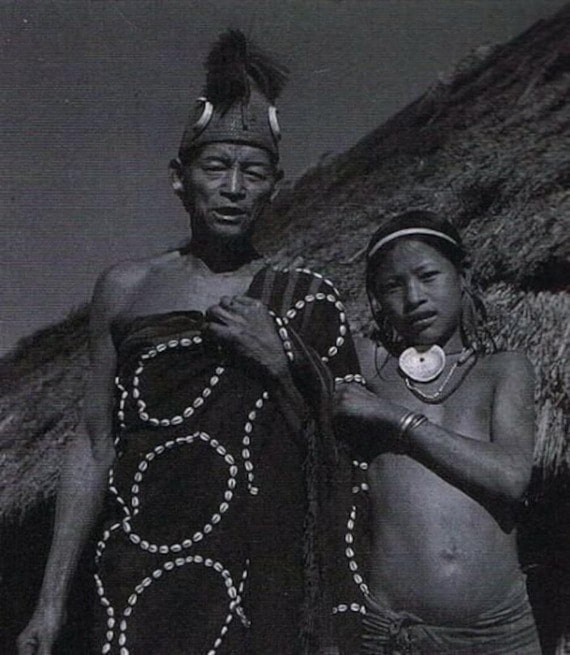
Each of the various Naga tribes has their own typical design. The rules for making these shawls are very strict, and it is believed that following them will bring luck to the wearer and to the whole tribe.
As some types of Naga shawls were made for warriors, it is believed that following the shawl-making rules was life-saving and kept them safe during the battles.
The Naga shawl seems to hold many curious secrets, so in this article, we are going deeper in exploring all about this legendary garment.
How Naga Shawls are made?
Naga shawls are made from natural materials, mostly cotton and wool. Sometimes, they use silk for more exclusive embroidery. Their creation involves three stages: spinning, dyeing, and weaving.
Spinning starts with cleaning and seed removal from cotton, and then it’s rolled into a thread using authentic, simple tools. Traditional bamboo spindles are used to spin the cotton into yarn. The cotton yarn is then dumped and beaten on a wooden board, starched with hot rice water, and dyed with forest-sourced materials.
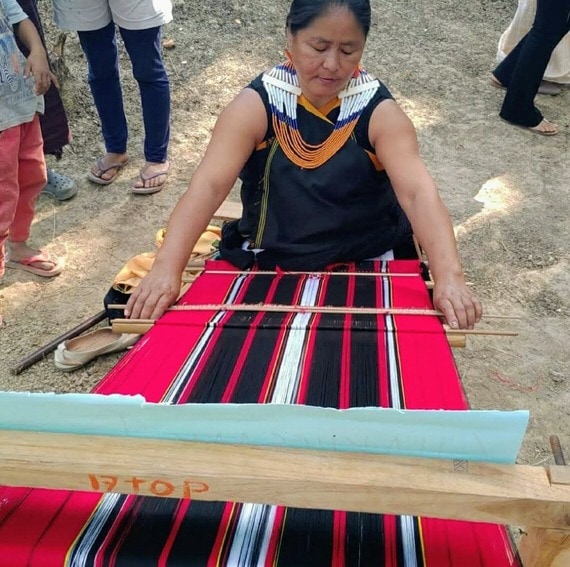
Different drying methods depend on the color; dark colors like blue are dried in the sun, and red is dried in the shade.
The weaving is made on a simple loom called a loin loom or backstrap loom (since the weaver uses her back to support the loom).
This loin loom is composed of six bamboo sticks. It is one of the oldest looms and is still used by tribes in Nagaland today. While other looms are also used, the loin loom remains the most common.
The traditional initiation of the tribal Naga women
Women of the Naga tribes are trained to weave since they were young girls; it is considered a vital initiation skill for becoming a woman and a wife. In the Lothas tribe, it is believed that a woman is not ready for marriage if she can’t weave, and the thing that will make her adequate is her ability to weave a particular man’s cloth.
The Zeliang tribe women had to show her fiance a shawl she wove herself to prove her maturity. Another custom was for the Chang Naga grooms, who had to wear a shawl woven by the bride at their wedding.
Symbolism in Naga Shawls
Naga Shawls play an essential role in performing traditional rituals and ceremonies. They are believed to bring good luck, provide spiritual support, and make the tribe’s fortune thrive. The shawls are a very delicate affair of culture, and they are woven with extreme care and have steadfast rules of weaving. It is said that a flawed shawl (a shawl that is not made following the rules) can bring bad luck to its wearer.
Motifs and designs in the Naga Shawls
Signifying courage and strength, the Naga shawls enchanting motifs are specific to a clan or tribe. Simple designs of straight lines, squares, and bands with motifs on top of them are done mostly in red, white, and black and create a powerful garment. The motif segment includes stripes, swords, animals, and conventional ritual objects.
Here are some of the common motifs you can find:
- Mithuns are the state animals of Nagaland and were used to be sacrificed in a cultural ritual made by people of high social status. They were privileged to wear a shawl with a mithun motif by this sacrifice.
- Rungu Is a sword used by Naga warriors and hunters who fought to protect their land and dignity or to hunt wild animals for food.
- Zeshe is a knife or a machete holder that both warriors and farmers wore for their daily activities.
- Moba is a chevron-like pattern that signifies the ordinary traditional stool used in every Naga household.
- Chapili is an old currency used by the Ao and Chang Naga tribes. It looks like a long, thin piece of iron with a long bulge like a knife.
- Spear and Dao: A sword and a knife; these symbols are associated with the traditional weapons used by warriors and for daily life.
- Tiger and lion, these mighty animals are symbols of strength that stand for the warrior who wore the shawl and his bravery. The tiger and lion are often painted or woven in pairs, facing each other.
- Hornbill feathers: All Naga tribes respect this symbol and use it as a powerful head decoration, creating a strong image and mysterious charm.
Tribal Identity in Naga shawls
There are 16 tribes in Nagaland. Each tribe has its own distinctive Naga shawl design.
Here are some of the Naga shawl types:
– Tsungkotepsu Shawl is part of the clothing of the Ao tribe. It is woven on a dark base with white side bands and horizontal black and red bands. They use motifs like elephants and tigers. This shawl signifies the owner’s affluence and bravery, and the red color is usually a reminder of the enemy’s blood. It is donned only by experienced warriors or those who sacrificed a Mithun (to be explained later).
– Rongsu Shawl is another shawl of the Ao’s and is mainly worn by men if a Mithun sacrifice has taken place over three generations of the family.
– Angami Naga Shawl is a black shawl with thick, bold embroidered animal motifs. The warriors of the Angami tribe mainly wear it.
– Konoma & Mozaluo are warrior shawls with sword motifs.
– Rongkhim is worn only by highly respected warriors in the Yimchunger Naga tribe. It’s considered one of the most beautiful shawls, with its striking red and black colors complemented by narrow Grey bands at the edges.
– The Loukaisa shawls are made and worn by women only. They are colorful and highly cherished, with many traditions linked to their creation and use.
– The Shatni shawl is a wedding shawl worn by Konyak tribal women on their wedding day, and when they pass away, they are covered with it again.
– Shawls for young women. In Naga tradition, young women’s shawls must not be red as it is believed to bring them violent death. Therefore, red is seen only on shawls worn by older women.
– The Sami Lami Phee is an Angami Naga shawl, usually gifted to warriors by the leader. It is made with an intrigue embroidery, with forest animals embroidered on a dark base.
– Supong is a distinctive shawl of the Sangtam tribe, usually worn by the wealthy, featuring a black base with top and bottom gray bands.
– Tsungrem Khim is a shawl made solely for women; it is trendy in the community.
– Lotha is a classic Naga shawl from the Lotha tribe, decorated with patterns representing the wearer’s social feast count.
– Khekaisa: An exclusive shawl for elected leaders, officers, ordained ministers, and social activists.
– Chang Cloth: A cloth donned by young warriors. It requires the zig-zag lines to be uniform, or it’s believed to bring premature death to the wearer.
– Painted Shawls of the Lotha, Ao, and Rengma tribes. These tribes paint the motifs on the shawls created by their women. The painting is done freehand exclusively by the older men of the tribes.
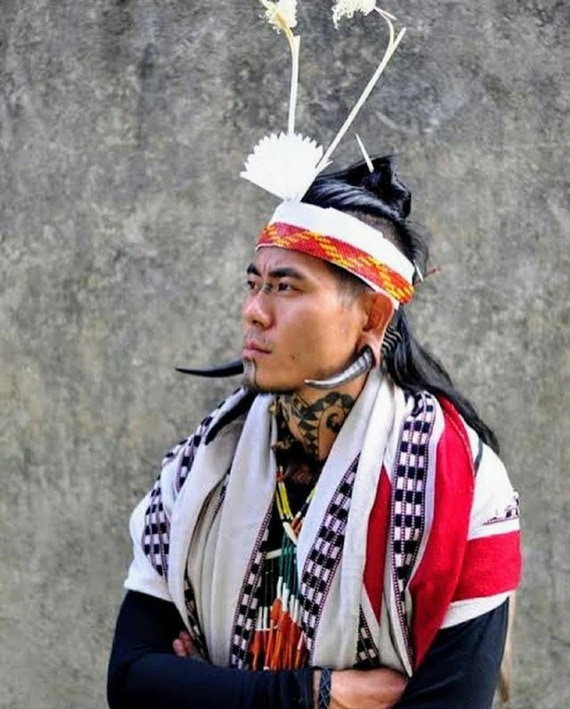
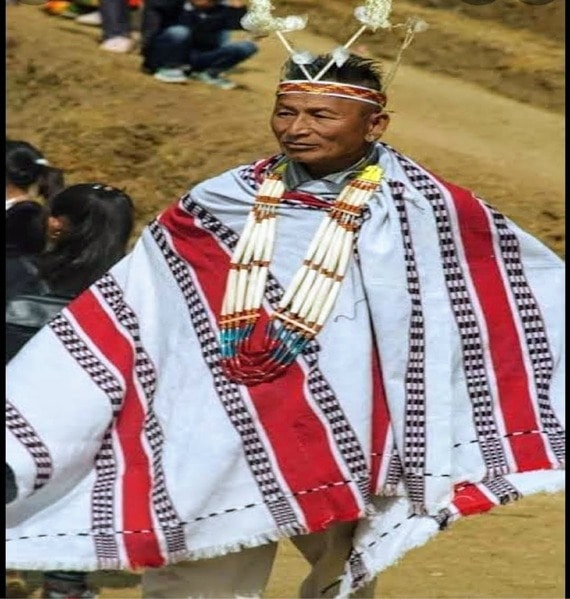
The History of Naga Shawls
The history of Naga shawls is traced back to a group of Indo-Tibetan people who migrated to the northeastern part of India in ancient times. They settled down in an eastern area today known as Nagaland. Being ‘Warrior tribes’, these people had unique outfits and style, they used to wear various adornments like shawls, cowries, hornbill feathers, and necklaces, which symbolize their courage. Some wore unique “warrior shawls”, woven with distinctive motifs and patterns that tell the story of the wearers’ courage and bravery.
While there isn’t any documented history tracing the beginning of weaving in these tribes, there are a few different tales and myths regarding it.
The folklore of the Ao Naga tribe tells the story of a woman named Longkongla, who was considered the initiator of their weaving tradition. Longkongla, known for her mystical abilities and unique bond with the spirit realm, was inspired by her celestial friends and initiated weaving to establish individual identities for different clans.
Similarly, the Yimchunger Nagas tribe believe that the art of spinning and weaving was learned from the spirits. These beliefs make the origin of this craft even more mysterious and fascinating.
The ‘warriors’ tradition has waned over time, and their traditional attire has transformed and become a staple textiles and designs in the Naga’s everyday life. They are now used for shawls, home decor, and accessories, still carrying the distinctive symbols once displayed to reflect their unique identities.
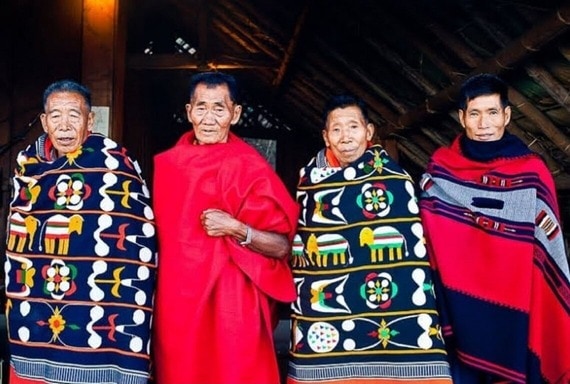
Naga Shawls’ future
Changes continued to take place in the patterns and designs of the shawls over time, and new colors and motifs are now seen. Today, we can find traditional and more touristic shawls in more modern and updated versions of the Naga shawls. You might even find a Naga shawl with Christian symbols.
Though the global transformations of traditional crafts caused a growing market of mass industrial weaving for tourist garments, which still keeps some authentic beauty, the Naga weavers are committed to sustaining their age-old practices. The Naga women are making pillow covers with traditional motifs and selling them online.
As mentioned, the Chakhesang Naga shawl was registered with a Geographical Indication (GI) Tag, classified under ‘Handcrafts’. The distinctive certification of the GI protects the regional authenticity of products, thus ensuring the preservation of unique cultural craftsmanship such as Naga weaving.
We hope more types of Naga shawls will receive the GI so we can still enjoy these magnificent authentic garments.
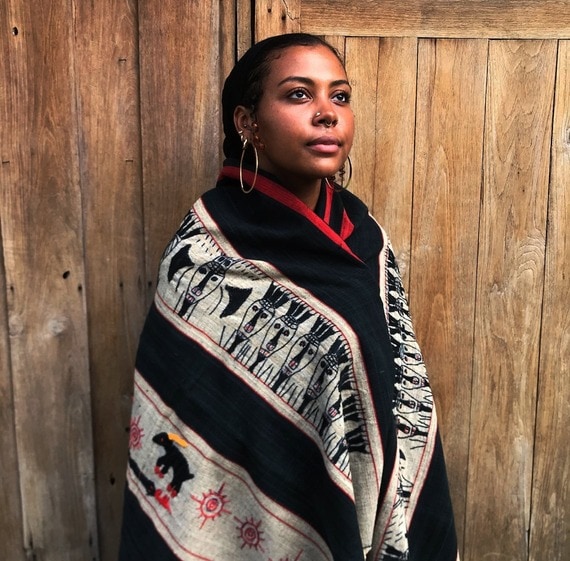
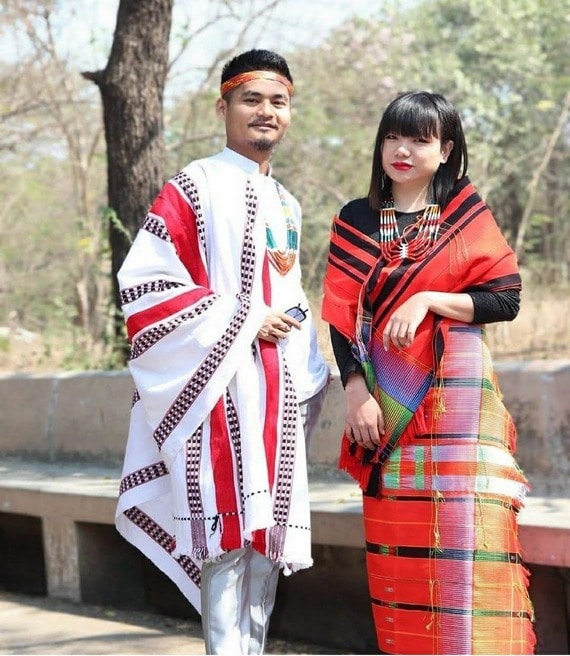
Right – Handwoven Naga Tribe Warrior Blanket by NamasteYOGAstore (Etsy)
Naga Shawls Protection
Speaking of the GI protection, with globalization, the Naga shawls have gained massive attention, and the Naga culture has been exposed to different markets worldwide.
Along with that came more industrial garments of less uniqueness and quality and some misrepresentations of this ethnic wear.
Using traditional precious assets in the wrong context can harm the original cultural heritage and respect.
Fashion designer Ritu Beri and TRIFED made a fashion show inspired by the fantastic charm of the Naga shawl, but by not keeping the respect these garments deserve, they were sued. Here is the story:
EastMojo, the online Northeast India News magazine, reported that the Chakhesang Women’s Welfare In Society (CWWS) filed a civil suit against the fashion designer Ritu Beri and TRIFED (Tribal Co-Operative Marketing Development Federation of India Ltd ) for misrepresenting two registered Naga shawls, ‘Rira’ and ‘Rura’, at a fashion show.
Female models wore the traditional shawls as skirts, which were part of a whole collection inspired by the Nagaland art under the theme: “Naturally North East: the Naga Narrative”.
The case was initiated following the display of the Chakhesang traditional shawls at the Suraj Kund Crafts mela in 2020.
The civil suit claimed “damages for wrongful and illegal action for infringement of registered GI”. It is written that the acting executive director of CWWS said that the show has caused “irreparable damage” and has “distorted the identity of the traditional shawls which are GI registered”.
In the claim, it is emphasized that the two shawls — ‘Rira’ and ‘Rura’ — are precious trad garments woven and designed with a deep-rooted tradition and meaning and that Rira is a men’s shawl which is worn with respect and Rura is the feminine version of Rira, worn by women.
A Personal Reflection on Cultural Beauty
As a fashion designer and admirer, when looking at these beautiful cultural pieces of art, I can fully grasp the inspiration to showcase them and incorporate their motifs into other garments. But, respecting the role of any ancient traditional art is so important, and the proper credit should be given.
It is great that these shawls and their offsprings are still here without being involved in any life-threatening activities, to people or animals. We are blessed for the ability to enjoy them, even purchase one if we wish, and bring to our super modern life a precious reminder of the beauty and power of simplicity.
